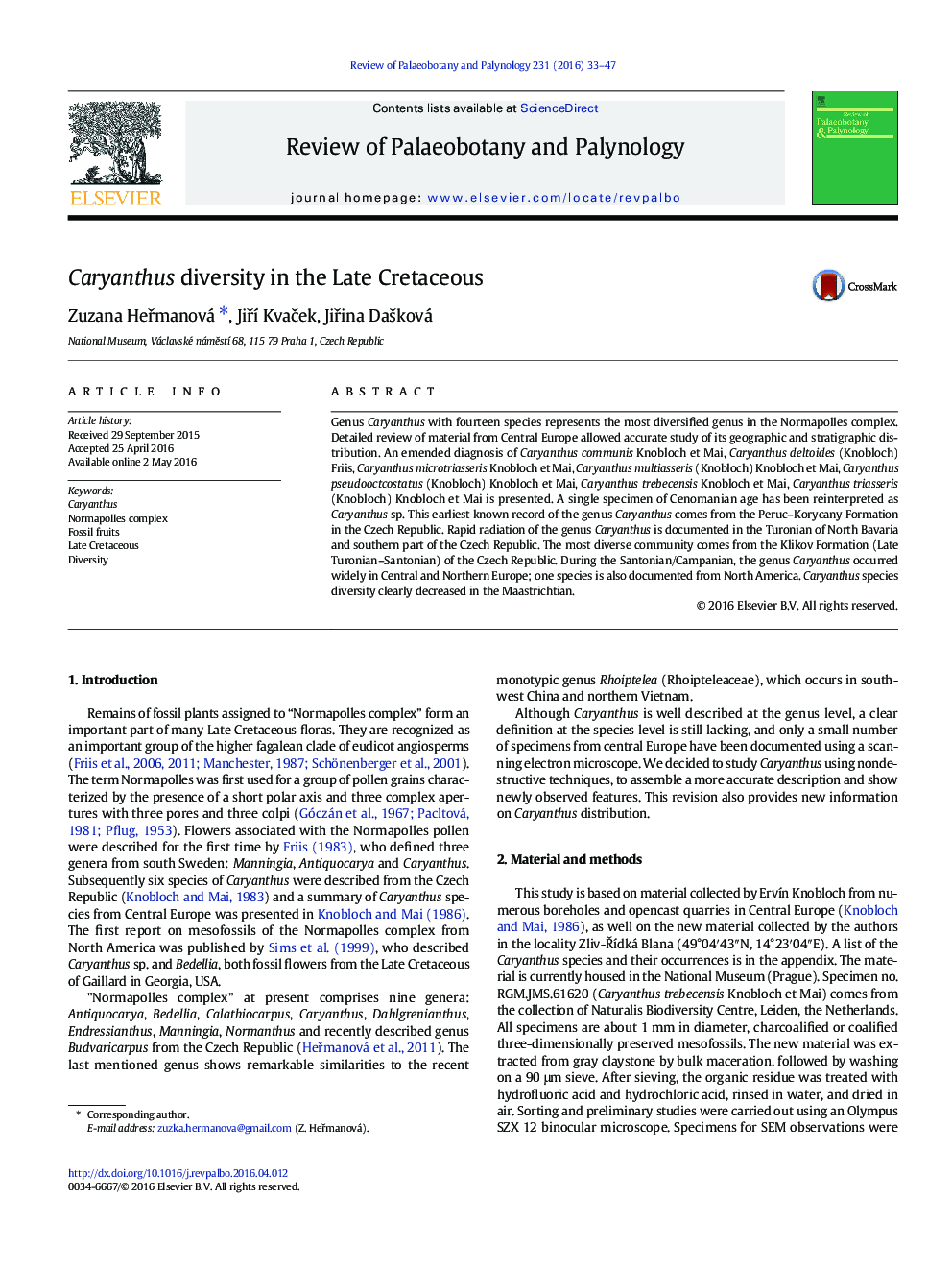| Article ID | Journal | Published Year | Pages | File Type |
|---|---|---|---|---|
| 4750065 | Review of Palaeobotany and Palynology | 2016 | 15 Pages |
•Genus Caryanthus represents the most diversified genus within Normapolles complex.•Detailed review of material from Central Europe allowed accurate study of its geographic and stratigraphical distribution.•Diagnoses of seven species of Caryanthus were emended.•Material from Cenomanian has been reinterpreted as Caryanthus sp.
Genus Caryanthus with fourteen species represents the most diversified genus in the Normapolles complex. Detailed review of material from Central Europe allowed accurate study of its geographic and stratigraphic distribution. An emended diagnosis of Caryanthus communis Knobloch et Mai, Caryanthus deltoides (Knobloch) Friis, Caryanthus microtriasseris Knobloch et Mai, Caryanthus multiasseris (Knobloch) Knobloch et Mai, Caryanthus pseudooctcostatus (Knobloch) Knobloch et Mai, Caryanthus trebecensis Knobloch et Mai, Caryanthus triasseris (Knobloch) Knobloch et Mai is presented. A single specimen of Cenomanian age has been reinterpreted as Caryanthus sp. This earliest known record of the genus Caryanthus comes from the Peruc–Korycany Formation in the Czech Republic. Rapid radiation of the genus Caryanthus is documented in the Turonian of North Bavaria and southern part of the Czech Republic. The most diverse community comes from the Klikov Formation (Late Turonian–Santonian) of the Czech Republic. During the Santonian/Campanian, the genus Caryanthus occurred widely in Central and Northern Europe; one species is also documented from North America. Caryanthus species diversity clearly decreased in the Maastrichtian.
